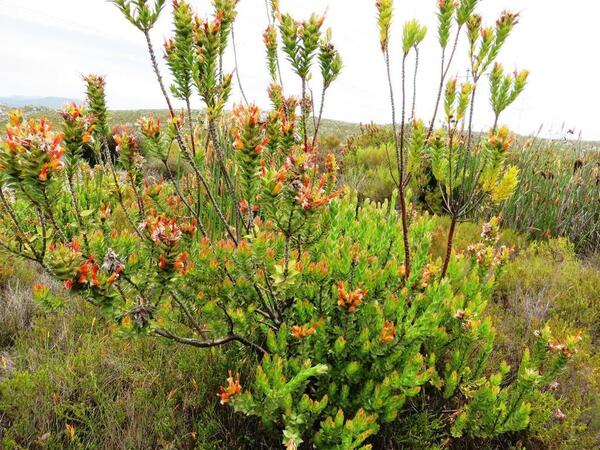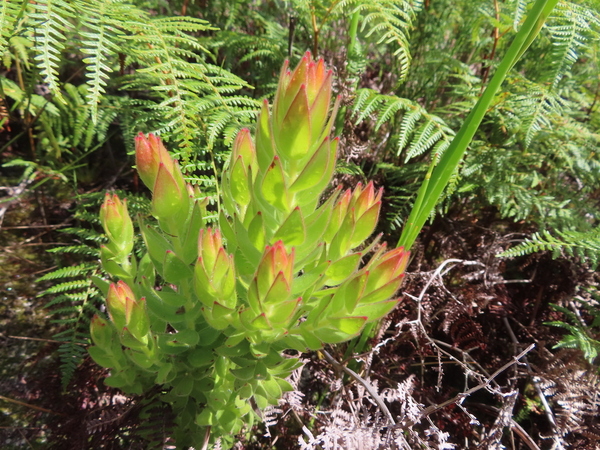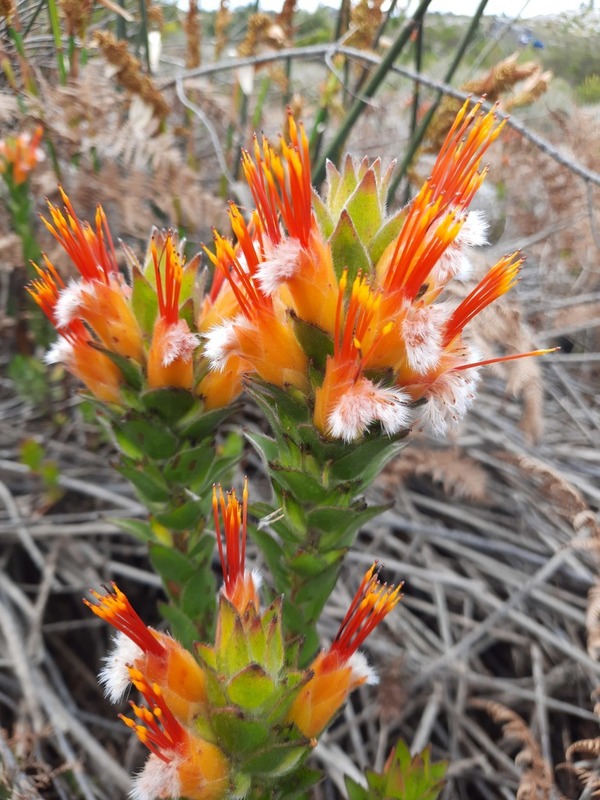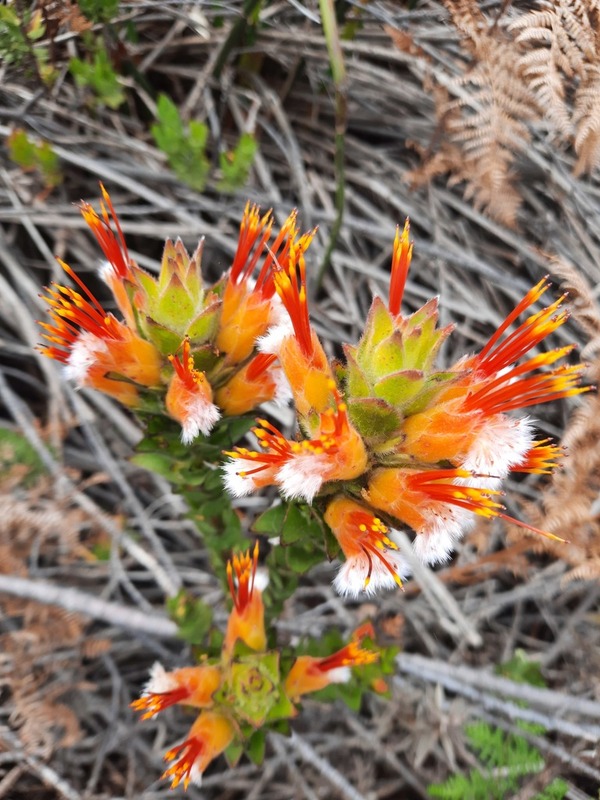The Conical Pagoda (Mimetes capitulatus) is a rare and visually striking member of the Proteaceae family, endemic to South Africa’s Cape Floristic Region. This evergreen shrub is known for its conical inflorescences, vibrant floral displays, and unique adaptations to the nutrient-poor soils of the fynbos biome. As one of the lesser-known species of the Mimetes genus, Mimetes capitulatus plays a crucial ecological role in supporting local pollinators, particularly sunbirds and insects.

Scientific Name: Mimetes capitulatus
Common Name: Conical Pagoda
Family: Proteaceae
Order: Proteales
Kingdom: Plantae
Native Range: South Africa, specifically the Cape Floristic Region
Habitat: Fynbos, montane slopes, and well-drained, nutrient-poor soils
Mimetes capitulatus belongs to the Mimetes genus, which consists of approximately 13 species of shrub-like proteas native to South Africa. The genus is characterized by its pagoda-shaped inflorescences, intricate floral structures, and reliance on fire-driven germination for regeneration.
The Conical Pagoda is a medium-sized, evergreen shrub that typically reaches heights of 1–2 meters. It features spirally arranged, leathery leaves that are often tinged with red or silver, adding to its ornamental appeal.

The conical flower heads (capitula) give this species its name.
Brightly colored bracts surround the flowers, forming a visually striking, pagoda-like structure.
The blooms are adapted for bird pollination, particularly by sunbirds, which feed on the nectar-rich flowers.
Flowering occurs primarily in the late winter to early summer months (July–December), depending on environmental conditions.
The leaves are narrow, lanceolate, and arranged spirally around the stem.
Their waxy coating helps reduce water loss, an adaptation to the Mediterranean-type climate of the fynbos.
Mimetes capitulatus plays a critical role in the fynbos ecosystem by attracting a variety of pollinators, including:
Sunbirds, which seek nectar and inadvertently transfer pollen between flowers.
Bees and other insects, which also contribute to pollination.
The plant exhibits myrmecochory, a seed dispersal mechanism where ants transport seeds underground, providing protection from predators and fire while aiding in germination post-fire events.

Like many fynbos species, the Conical Pagoda has evolved to thrive in fire-prone environments.
Seeds require heat exposure or smoke compounds to break dormancy.
Some plants survive fires by resprouting from fire-resistant underground structures.
This adaptation ensures that Mimetes capitulatus can regenerate even after severe wildfires, maintaining population stability.
Mimetes capitulatus is endemic to the Cape Floristic Region, one of the world’s biodiversity hotspots.
Found in montane fynbos, it prefers well-drained, acidic soils derived from sandstone.
The species thrives in elevations between 500–1200 meters, where it benefits from cooler temperatures and higher rainfall.
Grows in nutrient-poor, well-draining soils.
Requires a Mediterranean climate with wet winters and hot, dry summers.
Susceptible to climate change and habitat loss, requiring conservation efforts.

While not as widely studied as other Mimetes species, Mimetes capitulatus is considered rare and potentially threatened due to:
Habitat destruction (urban expansion, agriculture).
Invasive species (competition for resources).
Climate change (shifts in rainfall patterns and increased temperatures).
Uncontrolled wildfires (impacting populations before seed dispersal occurs).
Protected within nature reserves (e.g., Table Mountain National Park).
Seed banking initiatives to ensure long-term genetic preservation.
Fynbos restoration projects to rehabilitate degraded habitats.
Conservationists emphasize the importance of fire management strategies to ensure natural regeneration cycles remain intact.
While Mimetes capitulatus is not commonly cultivated, its unique conical inflorescence and striking foliage make it a desirable species for:
Botanical gardens and conservation projects.
Specialist native plant collectors.
Fynbos habitat restoration.
To successfully cultivate Mimetes capitulatus, growers must replicate its fynbos habitat conditions:
Well-draining, acidic soil (sandy or loamy mix).
Full sun exposure.
Moderate water requirements, mimicking natural winter rainfall.
Fire or smoke treatment may be required to stimulate germination.
Due to its sensitivity to root disturbance, container-grown plants should be transplanted with care.

Mimetes capitulatus, the Conical Pagoda, is a botanical treasure of the fynbos biome, valued for its striking appearance, ecological importance, and fire-adaptive survival strategies. As habitat loss and climate change pose growing threats, conservation efforts are crucial to protect this rare species. Whether admired for its ornamental potential or its ecological significance, the Conical Pagoda remains a symbol of South Africa’s extraordinary floral diversity.
animal tags: Proteaceae
We created this article in conjunction with AI technology, then made sure it was fact-checked and edited by a Animals Top editor.